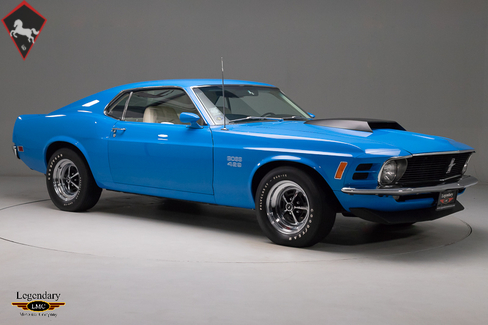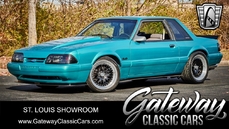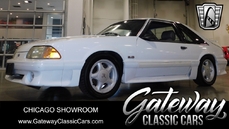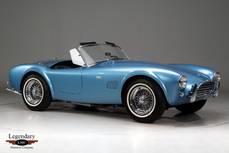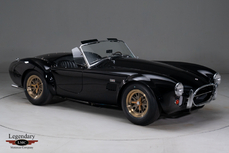Ford Mustang BOSS 429 1970
Allgemeine Beschreibung :
Factory Grabber Blue W/ White Interior
Only Of Only 499 Boss 429€™s Built For 1970
4-Speed Close Ratio Manual Transmission
Extremely Rare and Beautifully Restored
Fully And Completely Documented
LMC is very proud to offer for sale this 1970 Ford Mustang Boss 429
The Boss 429, sometimes referred to as the "Boss 9" by blue oval enthusiasts, is arguably one of the rarest and most valued muscle cars from the era. In total there were 859 original ’69 Boss 429s then only 499 Boss 429’s for the 1970 model year. The origin of the Boss 429 was as a result of Ford’s desire to compete NASCAR. Ford was seeking to develop a Hemi engine that could take on the Mopar Hemi boys - the 426 Hemi Charger Daytona and the Plymouth Superbirds - the monsters for Ford to slay to achieve their desire to rule the track. NASCAR required that at least 500 cars be fitted with the competition motor and sold to the general public. The Boss 429 engine featured aluminum cylinder heads, which had a modified Hemi type combustion chamber which Ford called "crescent". The Boss 429 engine used a single Holley four-barrel carburetor rated at 735 CFM mounted on an aluminum intake manifold. All these cars had the Hurst Competition Shifter 4-Speed Manual Transmissions and the Boss was rated very conservatively at 375 HP while actual output was believed to be well over 500 horsepower. Mustangs' were simply too small to accept the massive Boss 429 engine so Ford hired Kar Kraft of Brighton, Michigan to modify existing 428 Cobra Jet and Super Cobra Jet Mach 1 Mustangs. Modifications included widening the shock towers and extending out the inner fenders. The mounts for the front suspension were chopped and displaced to create room for the block and exhaust manifolds. The battery was repositioned to the trunk and a stiff 3/4" sway bar was added to rear end to improve handling since the car was now nose heavy. It was also equipped with a 3.91 ratio rear axle with a "Traction-Lock" limited slip differential. In addition, a hole was cut in the hood, and a manually controlled hood scoop was added. Other features included a front spoiler and color keyed dual racing mirrors. In short, all Boss Mustangs are simply big block power with few options. These very special cars were given NASCAR identification with a "KK" number that was placed on the driver's side door. 1970, the second model year had very minor changes and production was drastically cut back. Changes included the mechanical lifter camshaft and an improved dual exhaust system though rated power output stayed the same. The biggest change were the five new exterior colors – Grabber Blue, Grabber Orange, Grabber Green, Pastel Blue and Calypso Coral.
This Boss was built on September 9th, 1969 at Dearborn and then delivered new to Larson Ford Sales Inc in Murray, Utah. Open the hood with the fully functional air-gulping Hood Scoop, which were all painted Matte Black in ‘70 regardless of the color of the car, to find the monster Boss 429 engine. The engine bay shows very nicely, correctly and is fully detailed with all the production chalk marks, tags and decals. The Boss 429 engine is connected to its RUG 4-Speed Close Ratio Manual Transmission with the mandatory Hurst Competition Shifter. It also came factory equipped with a “V” Code 3.91 ratio rear axle with a Traction-Lock limited slip differential.
This Boss, representing the rarest production year of the Boss, has received a beautiful rotisserie restoration. It looks striking in the rare factory Code “J” Grabber Blue which has excellent depth and beauty. These cars had just a very plain external identification with only the White Boss 429 decals on the front fenders behind the bright chrome Magnum 500 wheels mounted on Goodyear Polyglas tires. The interior features the white Clarion Knit/Corinthian Vinyl Hi-Back Bucket Seats. Even the restoration of the undercarriage reflects a high level of the quality restoration and the detail taken to have this Boss present as you see it here. Marti Report also confirms the other features Drag Pack, Convenience Group, Clock, Rim Blow steering wheel, Console, Power Steering, Power Front Disc Brakes, AM Radio, Decor Group, Deluxe Seatbelts with Warning Light, Competition Suspension, Tachometer and Trip Odometer. Documentation includes a Marti Elite report and copy of original Ford invoice.
Only 499 Boss 429’s were built for 1970 making these legendary cars a rare sight. With its attractive color combination and beautiful restoration this example will certainly turn some heads. Being of this high quality and fully documented, this Boss 429 is an investment grade collector car and perfect for the astute Ford enthusiast.
http://www.legendarymotorcar.com/inventory/1970-ford-mustang-boss-429-2126.aspx
1970 Ford Mustang BOSS 429 is listed verkauft on ClassicDigest in Halton Hills by Legendary Motorcar for Preis nicht verfügbar.
Fakten der Auto
Karosserietyp : Auto Marke : Ford Modell : Mustang Ausführung : BOSS 429 Hubraum : 0.0 Modelljahr : 1970 Lage : Halton Hills
Verkauft
Angaben Zum Verkäufer
Verkauft
People who viewed this Ford Mustang also viewed similar Ford listed at ClassicDigest
Other cars listed for sale by this dealer
über Ford
Ford, 1902 gegründet, hat sich wohl durch die Einführung der ersten Volks Auto Model T 1908 änderte sich die Geschichte der Automobilwelt mehr als jeder andere Automobilhersteller hatten sie mehr als 15 Millionen Autos bis zum Ende der Produktion im Jahr 1927, durch die erzeugte, T obsolet geworden.Ford startete die erste günstige V8-Motor angetriebenes Auto 1932 1932 V8 war ein sofortiger Erfolg mit hervorragendem Handling und Leistung für viele weit mehr expansive Autos des Tages treffen. Kein Wunder, dass 32 V8 Ford hat sich wie ein Favorit unter Hot Rodder in der ganzen Welt mit 32 Zwei-Coupé als ihr Symbol.
Während des Krieges Ford vollständig abgeschaltet zivilen Fahrzeugproduktion um alle Ressourcen für die alliierten Kriegsanstrengungen zu widmen (1942-1945) Sie verwendet werden, um B-24 Bomber, Flugzeugmotoren, Jeeps zu bauen, M-4 Panzer, Militärfahrzeuge und Bren-gun Netzbetreibern und mehr als 30.000 turbogeladene Rolls Royce Merlin V-12-Motoren für Mosquito und Lancaster-Bomber als auch P-51 Mustang Kämpfer. Nach dem Krieg Ford-Fahrzeuge in den USA größer und auffälliger zusammen mit ihren Wettbewerbern. In den 60er Jahren Ford war wieder in der Spitze wieder bei der Einführung ihrer kommerziellen Hit Mustang 1964 Mustang war so populär, die Konkurrenz musste Ford Beispiel zu folgen und die ponycar Phänomen gegenüber den USA übernahm. Im Laufe der Jahre wuchs die Ponys einige Muskeln, bis der Ölkrise zu töten tötete sie schließlich ab.
In den sechziger Jahren stürzte Ford in internationalen Motorsport-Szene mit einer Wut. Nach erfolglosen Ferrari Nahme, als Enzo Ferrari hatte den Deal mit Henry Ford II, daß letzterer vor Wut kochen absolut abgeschnitten, wandte sich Ford zu Lola in Großbritannien zu produzieren einen Ferrari nach dem Spiel gegen Langstreckenfahrer . Die Zusammenarbeit zwischen Ford und Lola erstellt den mächtigen Ford GT40, die absolut zu schlagen Ferrari in Le Mans 24 mehrfach.
In Europa führte Ford einige der epischen Rennen und Rallye-Autos der 60er Jahre auf der Grundlage bescheidenen Familie Limousinen; Cortina GT, Lotus Cortina, Escort Twin Cam und Escort 1600RS mit den ikonischen Cosworth BDA Motoren.
Heute klassischen Fords sind äußerst beliebt bei den Fans und einer großen Auswahl an klassischen Fords können zum Verkauf an www.ClassicDigest.com gefunden werden
